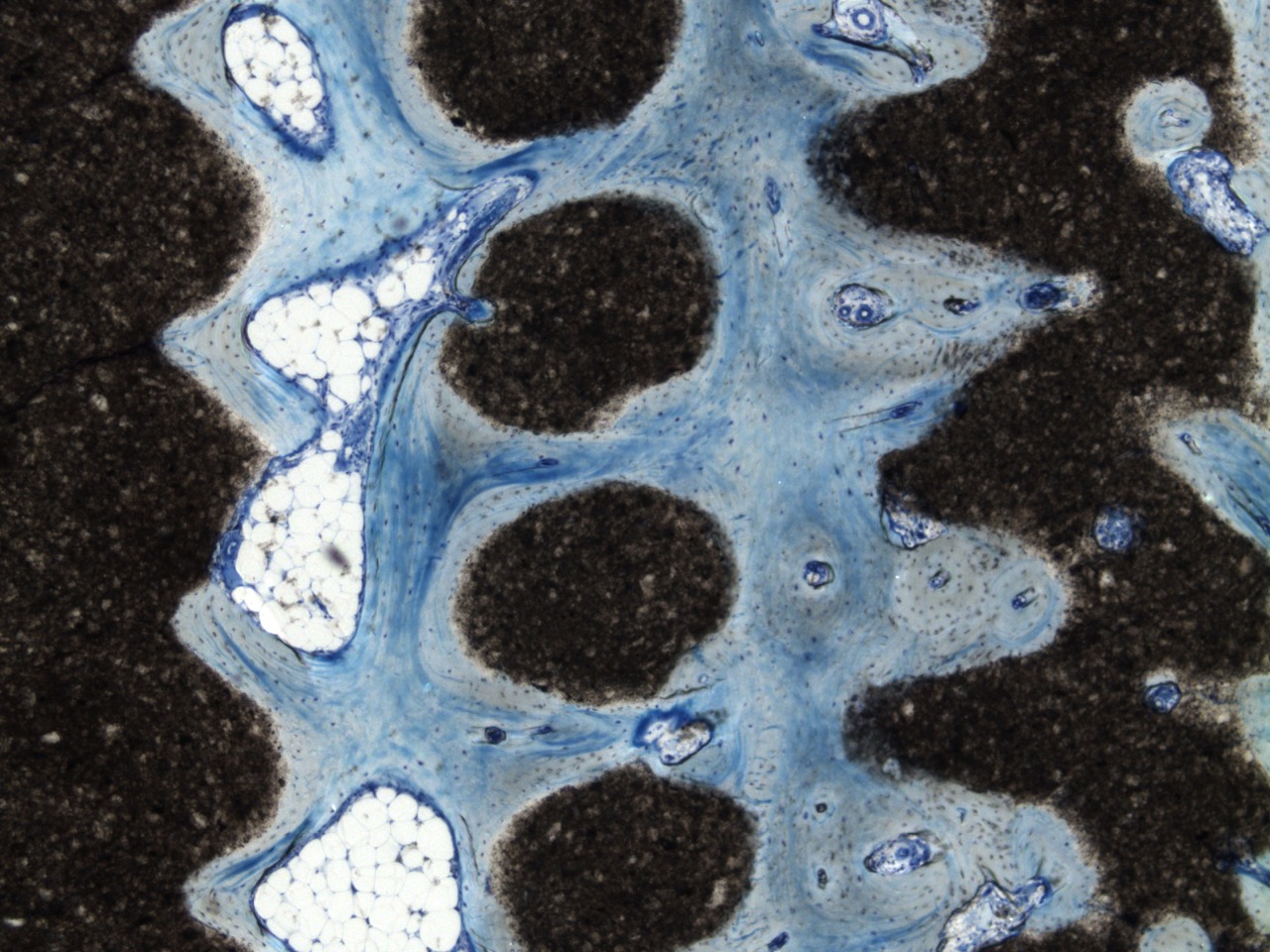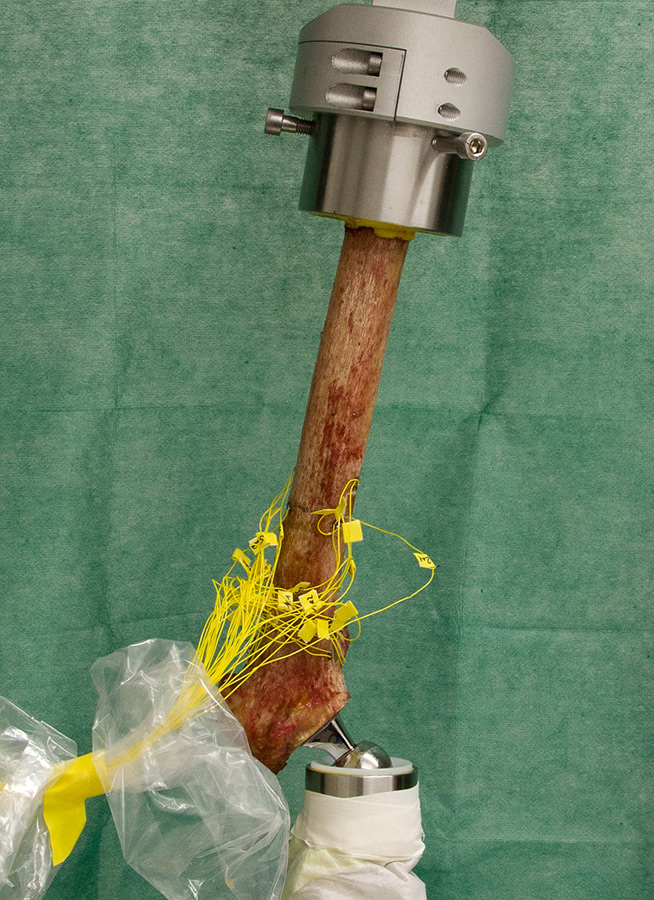
Biomaterials and implants
Biomaterials and implants are frequently used to treat injuries and disorders of the musculoskeletal system and the reconstitution of function. Examples are endoprotheses, osteosynthesis devices for the stabilisation of fractures in the long bones and the spine, resorbable bone grafts and scaffold for tissue engineering. Every biomaterial and implant should fulfil a specific mechanical function, be biocompatible, and even release factors to influence biological processes.
The goal of our research is to develop novel biomaterials to improve osseointegration and tissue regeneration, or to prevent and treat infections. Other projects aim to improve degradation and mechanical properties of biomaterials and implants. To test new developments, we established a broad spectrum of methods ranging from in vitro biocompatibility testing using cell cultures to mechanical testing using static and dynamic materials testing machines and motion simulators. We are also experienced in in vivo testing of biomaterials under non-loaded and load-bearing conditions. To develop new product ideas, we frequently cooperate closely with industrial partners.
Contact persons
- Fracture fixation, total joint replacement
Dr. Andreas Seitz
Tel.: +49 731 500-55333
Fax: +49 731 500-55302
E-mail
- Spine
Prof. Dr. Hans-Joachim Wilke
Tel.: +49 731 500-55320
Fax: +49 731 500-55302
E-mail
- Bone replacement
Univ. Prof. Dr. Anita Ignatius
Tel.: +49 731 500-55300
Fax: +49 731 500-55302
E-mail


